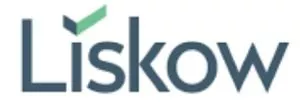The SECURE 2.0 Act of 2022 ("SECURE 2.0"), signed into law by President Biden on December 29, 2022, is another round of retirement reforms that began with the original SECURE Act (i.e., the "Setting Every Community Up for Retirement Enhancement Act") passed in 2019. SECURE 2.0 is memorialized in "Division T" of the Consolidated Appropriations Act of 2023. Some of its provisions are effective now and others do not take effect until future years. In addition, some of its provisions mandate changes to employers' plans while others allow optional changes.
Ten of the most noteworthy changes under SECURE 2.0 include the following:
1. Required minimum distributions ("RMDs").
- The age requirement for RMDs is increased in 2023 from age 72 to age 73, then in 2033 to age 75.
- Pre-death RMDs for Roth contributions from qualified plans are no longer required starting in 2024.
- Starting this year, the penalty for failing to take an RMD will decrease from 50% to 25% of the RMD amount, and to 10% if corrected in a timely manner for IRAs.
2. Catch-Up Limit. The maximum annual amount for catch-up contributions for those age 60 to age 64 is increased in 2025 to the greater of $10,000 annually (adjusted annually) or 50% more than the standard catch-up amount to their defined contribution plan.
3. Rothified Catch-Ups. As a corollary to the increased catch-up contribution limits, starting in 2024 catch-up contributions are to be made in the form of Roth contributions, unless the participant's annual compensation is less than $145,000 (adjusted annually). Accordingly, lower-paid employees may continue to contribute catch-up contributions on a pre-tax basis.
4. New Plan Mandatory Auto-Enrollment/Escalation. Automatic enrollment and automatic escalation are generally required in new section 401(k) and 403(b) plans starting in 2025. Under these rules, a new section 401(k) or 403(b) plan must automatically enroll eligible employees to start contributing at least 3% and not more than 10% of their compensation and automatically increase contributions 1% per year up to a maximum of 10% to 15%. Participants can still opt out, and existing plans, employers with 10 or fewer employees, new businesses in existence for less than three years, church plans and governmental plans are exempt from these rules.
5. Optional New Plan Features Employers May Adopt:
- Starting in 2024, student loan matching programs under which employers will be permitted, but not required, to make employer matching contributions for their employees' student loan payments as if the payments were elective deferrals into the employer plan (i.e., even though the employees are not contributing those amounts to their plan).
- Starting in 2024, two forms of in-plan emergency savings accounts and distributions will be permitted: (i) participants may be permitted to take an emergency savings withdrawal of up to $1,000 per year (This withdrawal is not subject to an early withdrawal penalty and may be repaid over three years) and (ii) in addition to or instead of the emergency savings withdrawal, non-highly compensated participants may be permitted to elect to have an emergency savings account to which the participants may voluntarily or automatically contribute at up to 3% of their annual pay (capped at $2,500). Contributions to the emergency savings accounts are after-tax and subject to the plan's match (if any), and participants may take a distribution from their emergency savings account at any time. (This is a complex provision that will likely have lengthy Treasury and Labor regulations, so implementation by 2024 may be unlikely.)
- Starting in 2023, employees may be permitted to elect to receive vested matching or nonelective contributions on a Roth basis (although it may take time for plan provider and payroll systems to be updated in order to offer this feature).
6. Part-Timers. The service requirement that part-time employees must satisfy to be eligible to participate in a section 401(k) or 403(b) plan for elective deferrals has been reduced from three years to two years starting in 2025.
7. Cash-Out Threshold Increased. The small-balance automatic cash-out amount for terminated participants has been increased to $7,000 from $5,000 in 2024. In addition, plan service providers may offer plan sponsors automatic portability services, which could include the automatic transfer of an employee's low balance default IRA (established in connection with a distribution from a former employer's plan) into a new employer plan when they change jobs.
8.CITs for 403(b) Plans (Someday). Section 403(b) plans may be permitted (eventually) to utilize collective investment trusts ("CITs") as investment options. CITs are popular investment options under section 401(k) plans. CITs are tax exempt, pooled investment alternatives that are maintained by a bank or trust company and are similar to mutual funds though generally offered at lower costs. That said, currently, there is an issue with permitting the use of CITs by section 403(b) plans under the securities laws so this option actually will not be available until the securities laws issues are resolved.
9. DB Plan Funding Rules. The Department of Treasury is directed to update mortality tables used to determine minimum funding rules for defined benefit plan valuations within 18 months of the enactment of SECURE 2.0 (though the provision is deemed effective on the date of the enactment).
10. CB Plan Interest Rate Limit. The projected interest crediting rate for cash balance plans has been clarified to reflect that the rate shall not exceed six percent (6%) for plan years starting in 2023 generally.
Plan amendments that are required to meet the requirements of SECURE 2.0 must be made on or before the last day of the first plan year beginning on or after January 1, 2025 (2027 for governmental plans). In addition, the deadline for amendments under the original SECURE Act, CARES Act and Taxpayer Certainty and Disaster Relief Act of 2020 conform to these new dates.
For a summary of these provisions and certain other provisions of SECURE 2.0 that we believe may be more relevant to our clients, see SECURE Act 2.0 – Overview of Certain Provisions.
The content of this article is intended to provide a general guide to the subject matter. Specialist advice should be sought about your specific circumstances.




